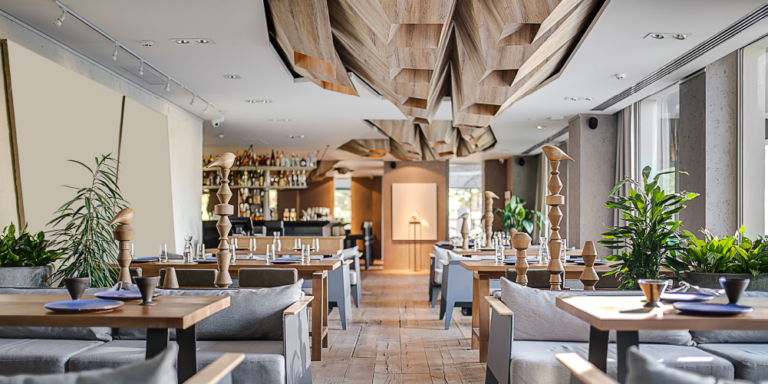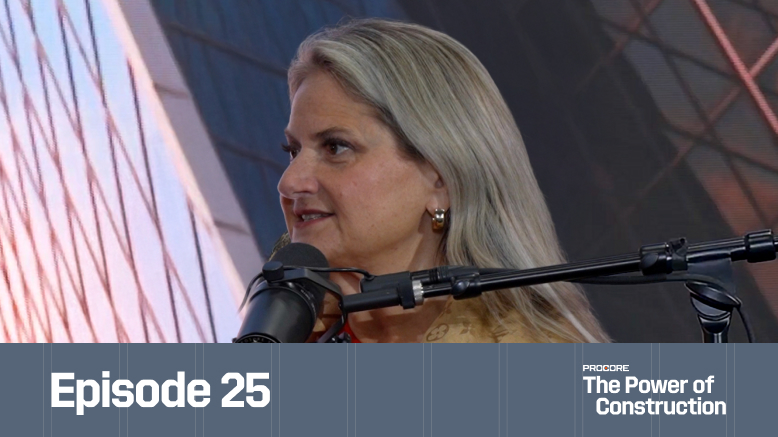— 8 min read
Restaurant Construction Projects: Key Factors From Planning to Closeout


Last Updated Mar 21, 2025

Jonathan Casilli
Senior Strategic Product Consultant
Jonathan Casilli joined Procore in June 2022 as a Senior Strategic Project Consultant specializing in Project Management, Core, and Quality & Safety. Jonathan has 13 years of combined GC/Owners/Consulting experience in the construction industry. He has served in various positions as an Estimator, Project Manager, Owners Rep, Director of Construction and Founder in and around the NYC Metro area. He is currently based in Las Vegas.

James Hamilton
Writer & Producer
85 articles
James Hamilton is a writer based in Brooklyn, New York with experience in television, documentaries, journalism, comedy, and podcasts. His work has been featured on VICE TV and on The Moth. James was a writer and narrator for the show, VICE News Tonight, where he won an Emmy Award and was nominated for a Peabody Award.
Last Updated Mar 21, 2025

Creating a successful, established restaurant begins with its construction. Because restaurants must be functional, durable, and noticeably unique, restaurant construction requires both technical precision and creativity, as well as the ability to work within tight timelines and rigid budgets. There’s always a need for contractors with experience building restaurants, and understanding how to manage the specific demands of restaurant construction can lead to a lifetime of professionally and financially rewarding work.
This article explores restaurant construction, including what makes it unique from other types of commercial projects, common challenges and what to expect from each phase of building.
Table of contents
The Basics of Restaurant Construction
Restaurant construction usually takes somewhere between six months to a year and a half, though the timeline and building process is different for each project. Important variables include the restaurant’s location, size, whether it’s a new building or an old space being repurposed, and the restaurant type, such as a standalone diner, a one-of-a-kind high end establishment, or a fast food chain.
General contractors (GCs) working in restaurant construction need to be able to work quickly, creatively, and have a knowledge of local health codes and regulations to help achieve a restaurant owner’s unique vision for their establishment, which might reflect the identity of their neighborhood, the culture of the food they’ll serve, and include unique finishes.
Many leases offer restaurant owners or restaurateurs the first six months rent free so they can prepare the space without losing money. This often adds urgency to complete construction in that timeframe.
Budgets can also be very tight, as restaurant owners often pour their life savings into opening a new restaurant, or borrow money from their bank or loved ones. Many general contractors (GCs) try to avoid change orders, which can devastate the budget and hurt their relationship with the restaurateur, and they work to recommend affordable alternatives for materials and methods during planning and preconstruction.
The Restaurant Construction Process
The type of restaurant changes how GCs, designers and owners approach the construction process. For example, chain restaurants are often built quicker than independent restaurants because many of the components are standardized.
Each phase of restaurant construction has unique demands and rewards compared to those in other types of commercial projects. The examples below will refer to a full-service, independently-owned restaurant.
Planning Phase
The planning and design phase is heavily focused on three things:
- Originality
- Safety
- Functionality
Restaurant owners want to building a space that will be unique, safe, and functional.
Design and preconstruction activities are heavily influenced by local regulations and inspections by authority having jurisdictions, or AHJs. Restaurants must comply with an extensive list of codes and regulations to pass inspections and receive licenses from a range of institutions, including the local health board, the liquor board, and the fire department.
Codes for restaurants commonly apply to:
- Kitchen safety
- Fire suppression systems
- Accessibility for people with disabilities
- Kitchen airflow
- Emergency signage and lighting
Codes vary greatly between municipalities. Many places post construction requirements on their website, such as this guide from the Minnesota Department of Health.
Ensuring the restaurant will be unique and functional requires immense attention to detail. Compared to owners in other commercial projects, restaurateurs tend to be more involved with designing details to curate a specific experience for future customers, such as selecting lighting, furniture, or flooring.
Preconstruction Phase
For existing buildings being retrofitted to have a commercial kitchen, preconstruction usually involves assessing the needs of the space, which might include running probes on the capacity of electrical, airflow, and water systems.
Many projects will bring on specialized consultants to address the specific needs of each part of construction. Preconstruction is often a time when consultants engage in value engineering for material and equipment, assess if design plans are up to code, and ensure materials can be procured and installed without delay.
For example, equipment consultants are often brought on to ensure cooking and kitchen equipment meets or exceeds safety regulations, is within budget and will meet the restaurant’s needs.
Construction Phase
The construction phase epitomizes the process of building a restaurant because it requires work to be done as quickly as possible, but with extremely high craftsmanship. Most restaurants are relatively small, which means work, material staging, deliveries and installations are often being done in the same, confined spaces. GCs should have a detailed plan for phasing work and managing materials. Many GCs, particularly in big cities, will have a warehouse to store equipment, receive deliveries, and stage materials.
In an attempt to save money or customize the space, restaurant owners will sometimes find their own subcontractors to do parts of the job. These scopes of work can range from tiling a bathroom, installing a ceiling, to building a bespoke bar.
Stay updated on what’s happening in construction.
Subscribe to Blueprint, Procore’s free construction newsletter, to get content from industry experts delivered straight to your inbox.

Post-Construction
After the build, restaurants must pass a variety of inspections and acquire licenses from different AHJs, such as the local health board, the liquor board, the fire department, and the municipality for the certificate of occupancy.
Compared with other types of commercial projects, the closeout process on a restaurant project is often faster. Restaurant owners are generally more heavily involved throughout construction and are eager to open. Owners are sometimes willing to overlook something that would otherwise be a punch list item, such as a chipped floor tile, as long as the kitchen equipment is working and they are able to open. Communicating with the owner throughout the process can help to minimize and expedite the punch list process.
The usability of a restaurant can’t truly be assessed until the restaurant has opened, servers are walking the floor, cooks are moving around the kitchen, and customers are seated and eating. GCs are regularly called back a few weeks after the opening of a restaurant to make small adjustments, even when major systems are working well.
Roles and Responsibilities
Here are a few things that make the stakeholders in restaurant construction unique.
| Job Title | Responsibility |
| General Contractor | General contractors who work in restaurants must be able to work quickly and with high levels or artistry and craftsmanship. They should be able to manage many subcontractors, working in different trades, often in very tight quarters. Many restaurateurs find trustworthy GCs through recommendations, either from other people in the industry or from the owner of their building. |
| Owner | In many restaurant scenarios, the term “owner” refers to two different people: the owner of the building and the owner of the restaurant, who is, in this case, a tenant of the building owner. The restaurant owner, or restauranteur, is usually the one who has developed the vision for the restaurant and has worked with a designer to create a plan for it. They are often very involved with the construction process, from selecting furniture, features, and equipment (FF&E) to finding specialized subcontractors. The building owner will sometimes ask to approve the final building plans but is generally not involved with the construction process. |
| Speciality Consultants | Restaurant construction usually requires input from a number of consultants that are specialized in restaurant-specific trades. Consultants are often a hybrid between a designer and a construction manager, as they will help a restaurateur define their vision and material needs, source materials and equipment, and serve as an intermediary between vendors and owners or contractors. Many construction teams include an equipment consultant, lighting consultant, acoustical consultant, furniture consultant and kitchen consultant. |
Common Challenges In Restaurant Construction
Many characteristics that make restaurant construction engaging and rewarding are also what can make it challenging.
Tight Timelines
Many restaurateurs have signed a lease that allows them a few months, often six, to prepare the space without paying rent. The clock is ticking until they need to get their certificate of occupancy (CO) and open for business. GCs should work with consultants to anticipate potential delays and use a variety of planning and project management techniques, such as the critical path method or work breakdown structure, to build precise schedules.
Tight Budgets
Restaurants have a relatively high failure rate, so every penny matters to someone launching their business. The budget a restaurateur comes with is often exactly what they have to spend, so there is little room for change orders or adjustments once work has commenced. GCs should communicate in the early phases of construction to understand the plan and to develop effective and affordable ways to execute it.
Uniqueness
Most restaurants are unique in one way or another. While that allows contractors to engage their artistry and creativity, it can also be a challenge because the process lacks repeatability. Most things are being done for the first time, which can make it hard to create systems and to anticipate issues that might cause delays.
Small Spaces
While restaurant construction often requires many people and a lot of equipment, restaurants are often built in relatively small spaces. This requires diligent planning by GCs for phasing work and coordinating material deliveries and storage.
The Secret To Success In Restaurant Construction
Best practices in building restaurants are often the same as with other commercial construction projects: organization, communication and planning. However, one key to finding success in restaurant construction is the simple, yet difficult practice of empathy.
For many restaurateurs, their restaurant represents years of work, dedication and financial savings. It’s also sadly common for restaurants to close within a year or two, simply because of the competitive nature of the industry and the high price of doing business. Remembering their passion and the high stakes for their business when they have questions or preferences on tiny details can help maintain a positive relationship between the owner and the GC and can cultivate a unique sense of collaboration that makes building restaurants a uniquely rewarding type of construction.
Was this article helpful?
Thank you for your submission.
100%
0%
You voted that this article was . Was this a mistake? If so, change your vote
Scroll less, learn more about construction.
Subscribe to The Blueprint, Procore’s construction newsletter, to get content from industry experts delivered straight to your inbox.
By clicking this button, you agree to our Privacy Notice and Terms of Service.
Thank you!
You’re signed up to receive The Blueprint newsletter from Procore. You can unsubscribe at any time.
Categories:
Written by

Jonathan Casilli
Senior Strategic Product Consultant | Procore
Jonathan Casilli joined Procore in June 2022 as a Senior Strategic Project Consultant specializing in Project Management, Core, and Quality & Safety. Jonathan has 13 years of combined GC/Owners/Consulting experience in the construction industry. He has served in various positions as an Estimator, Project Manager, Owners Rep, Director of Construction and Founder in and around the NYC Metro area. He is currently based in Las Vegas.
View profile
James Hamilton
Writer & Producer
85 articles
James Hamilton is a writer based in Brooklyn, New York with experience in television, documentaries, journalism, comedy, and podcasts. His work has been featured on VICE TV and on The Moth. James was a writer and narrator for the show, VICE News Tonight, where he won an Emmy Award and was nominated for a Peabody Award.
View profileExplore more helpful resources

Who is accountable for innovation in construction?
Everyone says construction needs to innovate—but no one agrees on who’s actually responsible for making it happen. Is it the owner? The builders? The tech vendor? Or is innovation everyone’s...

How Are Partnerships in Construction Being Redefined?
In a market where cost, speed, and quality are table stakes, owners are demanding more than projects delivered on time and on budget. They want trusted partners who bring strategy,...
What Does Construction Leadership Look Like in the Age of AI?
In this episode of The Power of Construction, hosts Sasha Reed and Andy Rampton examine how AI is reshaping leadership across industries. Guests Fiona Wilhelm, Director of Artificial Intelligence at...

What Drives Better Safety Outcomes—Carrot, Stick, or “Zero Harm”?
On paper, construction has never looked safer. In reality, mental health claims are rising, workers are disengaged and the compliance playbook is broken. Garry Mansfield, co-founder of Scratchie, argues the...
Free Tools
Calculators
Use our calculators to estimate the cost of construction materials for your next project.
Templates
Find a template to help you with your construction project tasks.
Material Price Tracker
Get the latest U.S. retail prices and view historical trends for common building materials.
Glossary
Explore key terms and phrases used in the industry.
